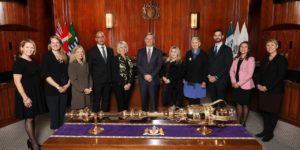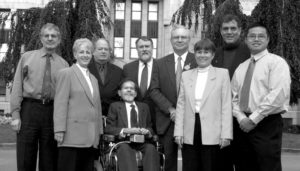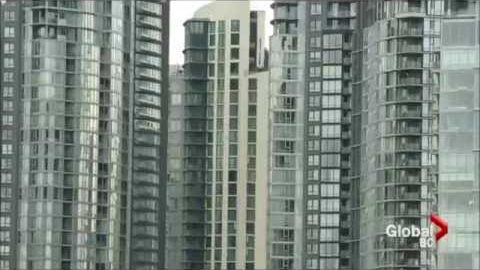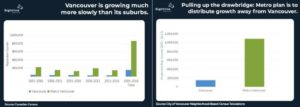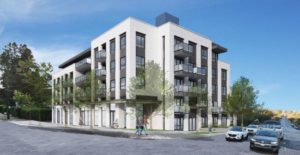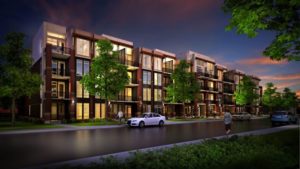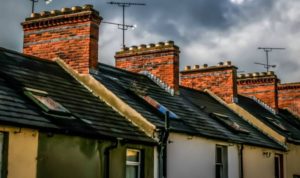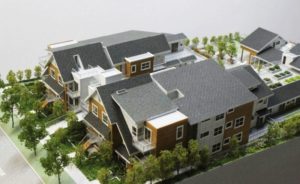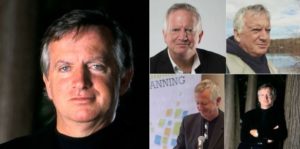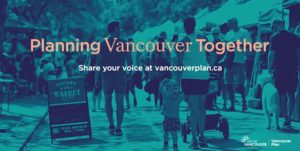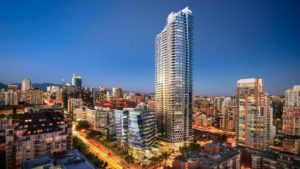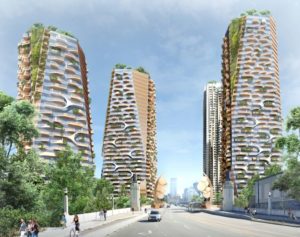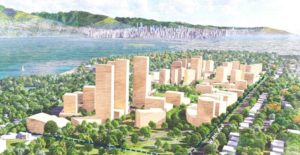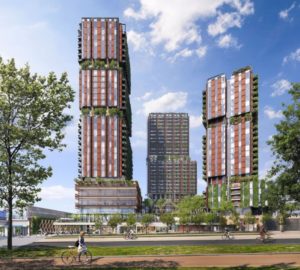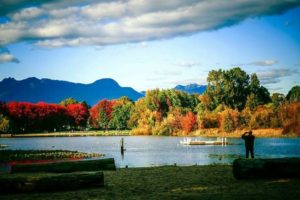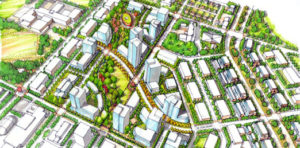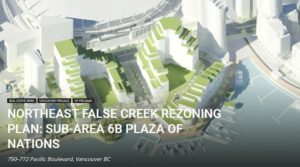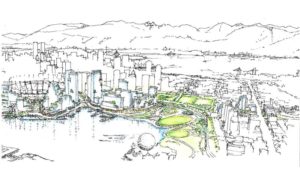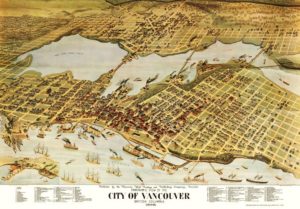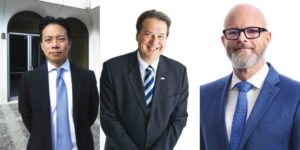 A Better City, Ken Sim; NPA Vancouver, John Coupar; Progress Vancouver, Mark Marissen
A Better City, Ken Sim; NPA Vancouver, John Coupar; Progress Vancouver, Mark Marissen
The three men pictured above are running to be Vancouver’s next Mayor.
Ken Sim, the man pictured on the left, ran as the Mayoral candidate with the Non-Partisan Association in 2018, and came within a hair’s breadth of becoming Mayor, garnering 48,748 votes for 28.16% of the vote, but losing to the candidate backed by the Vancouver District and Labour Council, and longtime New Democratic Party Member of Parliament for Burnaby South, Kennedy Stewart, who won 49,705 votes, or 957 more votes than his centre-right rival, to become Vancouver’s 40th Mayor, and the only Mayor to win in Vancouver running as an independent.
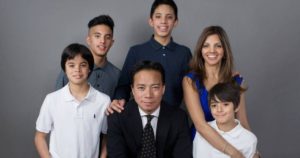
In 2022, Ken Sim is running with the newly-formed A Better City municipal party, a breakaway NPA Vancouver centre-right civic party formed by Mr. Sim, and former, longtime President of the Non-Partisan Association, Peter Armstrong.
In 2020, the NPA Board of Directors was taken over by members who held far-right extremist views, causing NPA elected members to desert the party, both at Council and at School Board.
Ken Sim deserted the Non-Partisan Association soon after.
Here’s what Charlie Smith, editor of The Straight has to say about Ken Sim …
“Ken Sim wants to preserve single-family neighbourhoods, anchoring his rental housing policy on the creation of more secondary suites. If A Better City won a majority on Council, here’s what I think would happen: a rewriting of the Downtown Eastside area plan to make it easier to build condos, along with a clampdown on rezonings in neighbourhoods like Dunbar and Shaughnessy. A Better City might also try to undo a Vision Vancouver policy to turn First Shaughnessy into a heritage conservation area, which irritated the local homeowners.”
In other words, Ken Sim envisions a regressive, developer-friendly, back to the future Vancouver, which serves the interests of the wealthy and the well-to-do.
All of the above said, Ken Sim comes into the 2022 campaign for civic office as the best funded Mayoral candidate, with the strongest and most well-practiced behind-the-scenes campaign team of any of the Mayoral candidates running for office in 2022. Sophia Leung, a former federal Liberal Cabinet Minister, has set about to secure the Chinese vote for Mr. Sim in every neighbourhood across our city. With half a dozen or more serious-minded candidates running to be Vancouver Mayor next year, if Ken Sim can somehow manage to keep the 48,748 votes cast for him in 2018, 323 days from now Ken Sim could very well become Vancouver’s next Mayor.
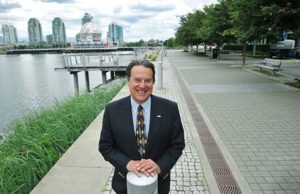 John Coupar Running to Become Vancouver’s next Mayor | Photograph by: Wayne Leidenfrost, PNG
John Coupar Running to Become Vancouver’s next Mayor | Photograph by: Wayne Leidenfrost, PNG
John Coupar is currently serving his third term as a Vancouver Park Board Commissioner, after having first been elected to Park Board in 2011. John (he’d want you to call him ‘John’) became Chair of Park Board in late 2014, when the Non-Partisan Association elected a majority to Park Board. John Coupar’s first act as Park Board Chair was to create swim sessions at Templeton & Lord Byng pools that would be open exclusively to members of Vancouver’s transgender and gender variant communities, an initiative for which they had lobbied.
In 2018, John sought the NPA Mayoral nomination, but lost out to upstart politico, Ken Sim, in a ballot-box stuffing venture initiated by then NPA President, Peter Armstrong, who bused in hundreds of ‘there only to vote’ NPA members at the June 2018 Mayoral nomination meeting.
In 2020, John Coupar was appointed the NPA Mayoral candidate for 2022, causing quite some consternation among NPA City Councillors Lisa Dominato, Colleen Hardwick and Sarah Kirby-Yung.
Now, John may be running with the NPA, Vancouver’s oldest and most successful municipal party, but unlike NPA Board members, John Coupar is not a far-right extremist. In fact, he is anything but. Still, according to the polls, the NPA has lost favour among the voting electorate. Hard to say what kind of money Mayoral candidate John Coupar will have to back his campaign for office, although word on the street has longtime NPA financier Rob MacDonald remaining loyal to the NPA.
In the months to come, VanRamblings will have a great deal more to say about each of the Vancouver Mayoral candidates running for election to Vancouver City Hall in 2022. Suffice to say for now that in order to break out of the right-of-centre pack, John Coupar’s best bet to become Vancouver’s next Mayor will be to run a tough, no nonsense Rudy Guiliani-style ‘law and order’ campaign, committed to hiring more police officers, cleaning up the streets (quite literally), and working to make Vancouver the safest city in Canada.
Whether 2022 Non-Partisan Association Mayoral candidate John Coupar has it in him to run that kind of successful campaign for office, only time will tell.
Longtime political strategist and the federal Liberal ‘operative’ who campaign-managed Stéphane Dion to victory as leader of the Liberal Party of Canada, on December 3rd, 2006, Mark Marissen was also involved in his ex-wife Christy Clark’s winning campaign for office in 2013 as leader of the B.C. Liberal Party.
Make no mistake, Mark aims to win in 2022 & become Vancouver’s next Mayor.
Vancouver is a centre-left city.
In the 2020 provincial election, the B.C. New Democrats won every Vancouver riding, with the exception of the wealthy burgh of Vancouver Quilchena. Federally, the progressive and decidedly left-of-centre Justin Trudeau-led Liberal Party of Canada won every Vancouver seat, with the exception of the New Democrat-held seats of Vancouver East & Vancouver Kingsway.
In 2022, no Mayoral candidate identifying him/herself as centre-right has any chance of becoming Vancouver’s next Mayor (unless John Coupar goes for the gusto, and runs a ‘law and order’ campaign). Mark Marissen knows that well.
VanRamblings sees Mark Marissen as the high energy, strategically-wise, take no guff, entertaining Vancouver Mayoral candidate who’ll campaign from the left, and should he become Mayor in 2022, ‘rule’ from the centre (not to mention, in favour of the contingent of developers backing his campaign for office).
Ex-B.C. Premier Christy Clark, Trudeau Liberal MP Sukh Dhaliwal and others at Mayoral Wannabe Mark Marissen’s maskless #cashforaccess banquet. #vanpoli #vanRE #bcpoli pic.twitter.com/8zBnGgY1oF
— Bob Mackin (@bobmackin) October 29, 2021
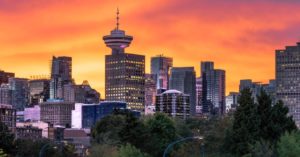
Seven months back, the folks at Press Progress published an article titled, Here’s a List of Vancouver’s Right-Wing Municipal Parties That Are All Currently At War With Each Other (the article is as relevant today as it was last spring).
Here’s their take on the shenanigans that is Vancouver right-wing politics …
“The city’s wealthy right-wing political class appear to have already decided on their winning strategy: Declaring war on each other. The city’s oldest municipal party, the Non-Partisan Association, is currently embroiled in an internal conflict between its elected caucus and far-right Board of Directors.
Meanwhile, the NPA’s former mayoral candidate (Ken Sim) is planning to run against his old party (with A Better City), and a Liberal backroom operative (Mark Marissen) has thrown his hat into the mayoral ring, too (with Progress Vancouver), for good measure. If you’re struggling to keep track of all this right-wing in-fighting, you’re not alone.”
We’re still 11 months away from Vancouver’s 2022 municipal election.
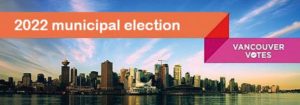
There’s lots to ponder about what’s going on at Vancouver City Hall and even more to reflect on in the days, weeks and months to come leading up to what may very well emerge as a crucially important Vancouver 2022 civic election, one that could set the course for our city for a generation, or more, to come.
